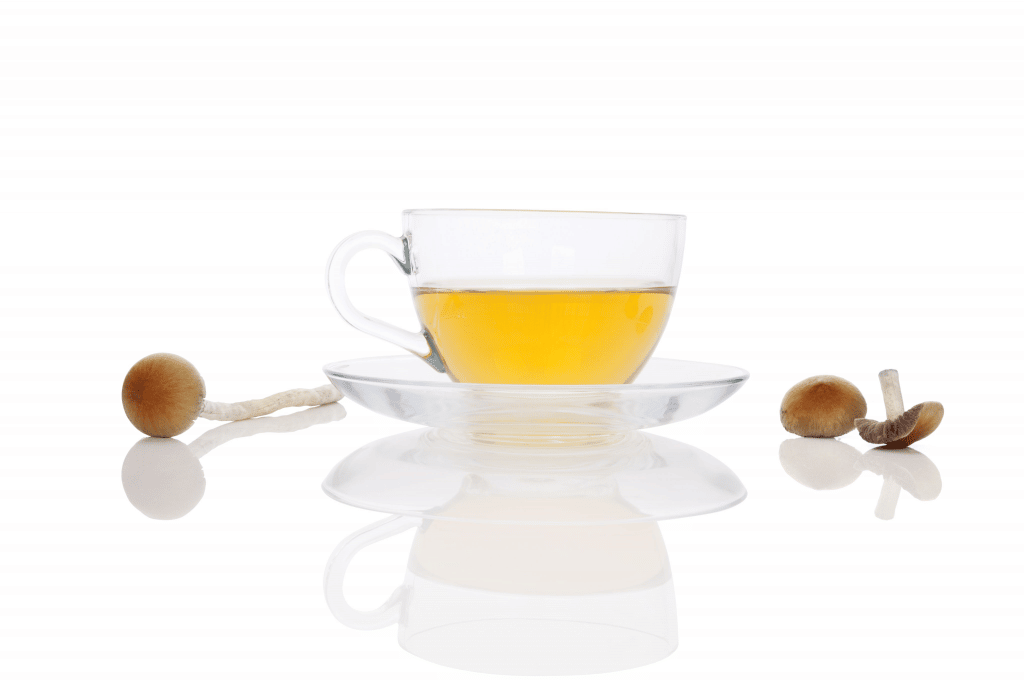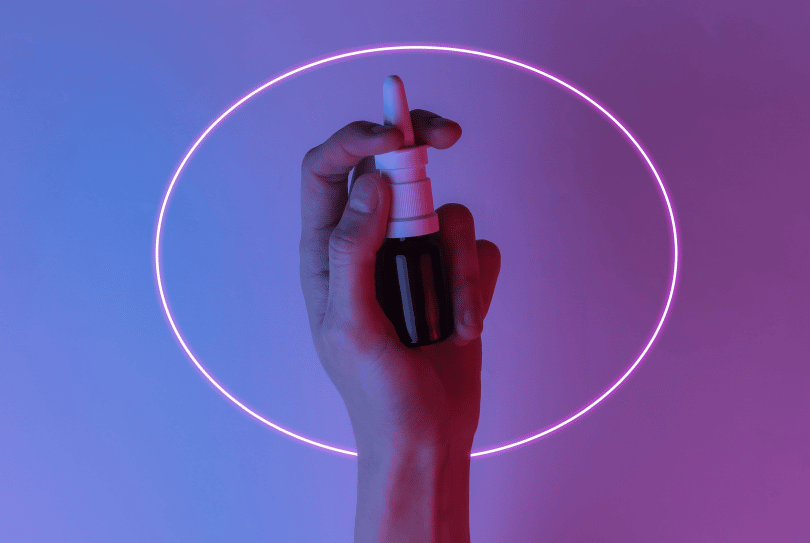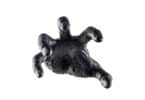Magic mushrooms are taking center stage as research points in the direction of the fungus’s many mental-health boosting qualities. Though tea’s, and eating raw mushrooms have been the norm, new technology will let you snort your shrooms with a new biopharma-made magic mushroom nasal spray.
A decade ago, the idea of a magic mushroom nasal spray would have been laughed at and rejected. Now it’s something that will likely be on store shelves whenever possible. We specialize in reporting on the expanding cannabis and psychedelics fields. Follow along by signing up to The Cannadelics Weekly Newsletter, and make sure you’re in first place for all new product promotions, as they begin to come out. We’ve also got standout offers on cannabinoids, like HHC-O, Delta 8, Delta 9 THC, Delta-10 THC, THCO, THCV, THCP & HHC, which won’t kill your bank account. Head over to our “Best-of” lists to get these deals, and remember to enjoy responsibly!
What’s the news?
A couple weeks ago, reports surfaced of Israel biopharma company Madrigal Mental Care’s new magic mushroom nasal spray. The new device was recently unleashed at the Biomed Israel Life Science and HealthTech conference in Tel Aviv, which is an international conference that took place earlier in May. The device is geared toward treating those with PTSD, and provides exact dosing via a nasal inhaler that goes inside the nostril.
The nasal spray is a nano-technology based delivery system, which can deliver nanoparticles of psychedelic medicines like psilocybin, more directly to the brain, without going through the digestive tract. The medicinal molecules are encapsulated in nanoparticles, which themselves are biodegradable, and break down in the body to release the medicine. The nasal inhaler can be used for more than just magic mushrooms, and is spoken about for use with ketamine, mescaline, and MDMA as well.
Stated cofounder and chairman of Madrigal, David Gabay, this system makes for “a significant advantage over common practices in terms of stability and accuracy.” He continued about current trials: “We are currently beginning preclinical trials with rodents with the aim of achieving efficacy and safety approvals in order to begin first-in-human clinical trials next year.”

The device was designed by Prof. Amnon Sintov of Ben-Gurion University of the Negev’s biomedical engineering department. He said, “An increasing number of studies point to the advantages of using psychedelic drugs for the treatment of psychiatric disorders such as PTSD, depression, anxiety, obsessive compulsive disorder, and even addiction, with low doses.”
He went on, “Due to their powerful effect on the human brain, it is imperative to be able to deliver these drugs in a safe manner and in precise doses.” The current non-human trials are being carried out with psilocybin, led by Prof. Shimon Ben-Shabat from Ben Gurion’s department of biochemistry and pharmacology.
The technology which was developed at Ben Gurion University, was licensed to Madrigal by Ben Gurion University’s tech transfer company, called BGN Technologies.
Is this the first of its kind?
Actually no. This is not the first magic mushroom nasal spray announced. The first one came out several years ago in 2019. At that time, Silo Wellness out of Oregon created its own magic mushroom nasal spray for use with PTSD and depression. The device was developed in Jamaica, where magic mushrooms are legal and openly sold, and provides for metered dosing of the active component psilocybin.
At the time, according to board advisor Becky Rotterman, “Many psilocybin patients, particularly women, complain of upset stomach or vomiting when taking high-doses of mushrooms… We want to bring this wonderful natural medicine first to Oregon and then the flyover states – to those who would be afraid to eat a handful of fungi and who feel more comfortable seeing their medicine in a familiar delivery modality, such as a metered-dose nasal spray.”
While this certainly doesn’t say much for what a person expects treatment to look like, or the implication that people are actually happier with what looks like a pharmaceutical, over what looks like nature, this nasal inhaler marked the first of its kind concerning the delivery of psilocybin nasally.

Mike Arnold, the founder of Silo Wellness, said he created the device after his first experience with psilocybin, in an effort to make it easier for people who don’t have the luxury of benefiting from a medical setting, for their experience.
“I couldn’t help to think how fortunate I was to have an actual physician take me on my first trip rather than ‘some guy’ I know, but I realized that most first-time users don’t have that luxury,” he said. “I reached out to my long-time colleague from the marijuana space, brilliant inventor Michael Hartman, and we agreed that we need to be able to give patients predictable dosing so they can self-titrate into the desired levels of sub-psychedelic or psychedelic treatment.”
He concluded, “We solved the age-old problem with plant- and fungus-based medicine: How do you know how much is a dose? How do you avoid taking too much, like the cannabis edibles dilemma? We also managed to solve one of the common complaints of some mushroom users: taste and upset stomach.”
Much like with Madrigal, this first news story was more a press release for the product’s existence, than a new product offering. Since that time, Silo has established a patent for its product in June of 2020. The company is patiently waiting for regulation on the new magic mushroom industry to be released in Oregon, so it can begin dispensing its product. While it waits, it promotes its Marley One non-psychedelic mushroom product line.
Other applications
Now we know that magic mushroom nasal spray is a thing, but how else can magic mushrooms be taken? We know that smoking them isn’t terribly effective because psilocybin breaks down in heat. Though some say they may have felt something (not the most convincing of statements), others complained of feeling sick, or just simply being disappointed.
This also makes it necessary to make teas out of mushroom powder in order to retain the effects, considering the thermal lability of psilocybin in heat. Drinking it as tea is similar to eating a mushroom, in that it still goes through the digestive tract.

Skin applications are also growing in popularity. Though mushroom products on the market now don’t have psilocybin, due to regulation, there are a bunch of interesting products taking advantage of other medical benefits of non-psychedelic mushrooms. I expect when legalizations do come through, these companies will be quick to incorporate compounds currently illegal for use, into their products. Unlike eating raw mushrooms or drinking tea, skin products bypass the digestive tract.
So far, injecting these compounds isn’t really a thing, though it has been mentioned in some studies. Many compounds are more easily absorbed when taken via IV or IM administration, but this doesn’t mean everything works this way. It is quite possible that as research continues, we may start hearing about mushroom injections in the future. For now, best to focus on forms of administration that are already cleared as safe for use.
Skin patches
The other application getting a lot of attention right now are magic mushroom skin patches. There are different models under testing and they come in different forms. Skin patches are a basic mode of medication delivery that are used for a range of things from pain management, to birth control administration, to help removing warts. The basic idea is that there’s some kind of adhesive, with medicine within or around it, that gets absorbed into the skin over time, making for an even dose over many hours.
A couple companies are already creating magic mushroom skin patches in this way. Nova Mentis (NOVA) and Mycrodose teamed up to produce skin patches particularly for the genetic condition fragile X syndrome. Ei.Ventures and Tioga research also partnered up and are getting in on the action, with their psilocybin skin patches meant for transdermal delivery of psilocybin, as well as other psychedelic compounds.
However, even this standard model is under construction. The Terasaki Institute for Biomedical Innovation (TIBI) recently partnered with Pharma Ther, Inc. (PHRM) to create microneedle patches. These patches differ in that they contain tons of microneedles on the surface layer that penetrate the skin to leave the medicine within. These patches are made of a gelatinous substance, and are currently under investigation for use with MDMA, LSD, DMT, psilocybin, and ketamine delivery.
Conclusion
It’s always cool to see something new and technologically advanced come out. And it’s always useful to have better treatment options. In the next few years, we should see tons of applications involving magic mushroom usage in products like nasal spray, skin patches, skin creams, and possibly more. We’ll just have to wait to see how far this goes.
Thanks for joining us! You’ve made it to CBDtesters.co / Cannadelics.com, your top internet spot for comprehensive independent coverage of the new and growing cannabis and psychedelics fields. Join us daily for a dose of industry news, and subscribe to The Cannadelics Weekly Newsletter, to stay updated on everything important going on.









